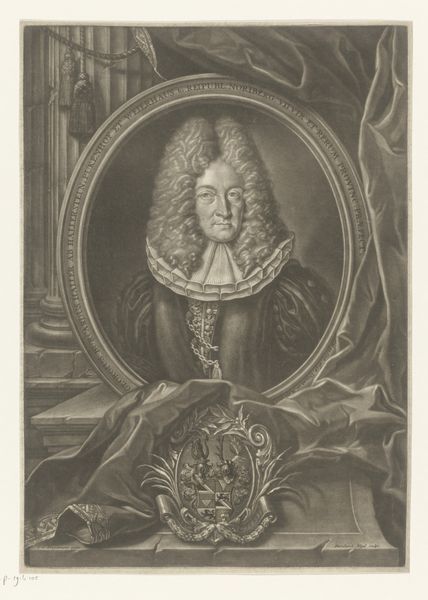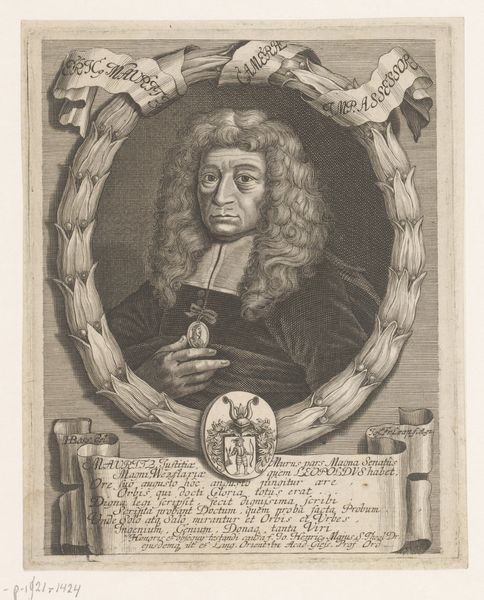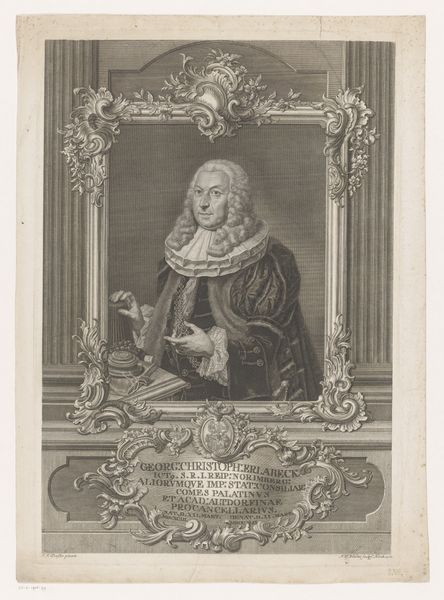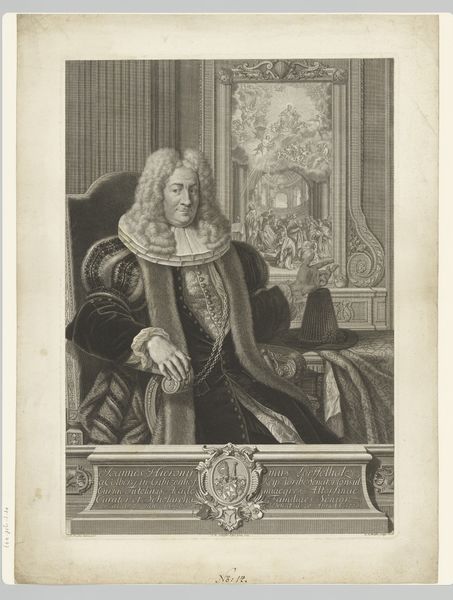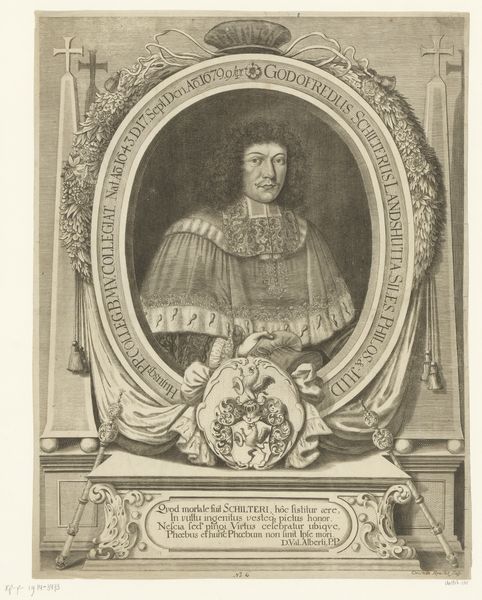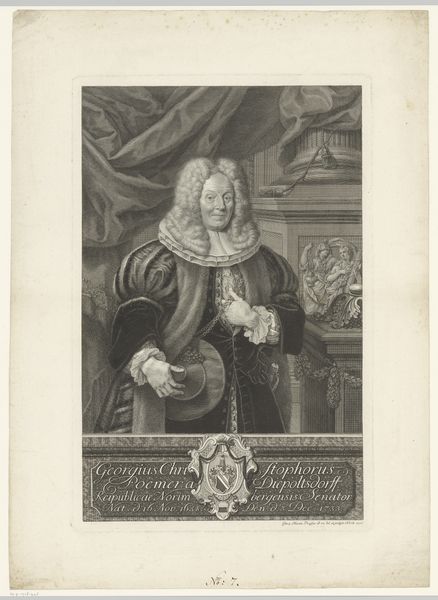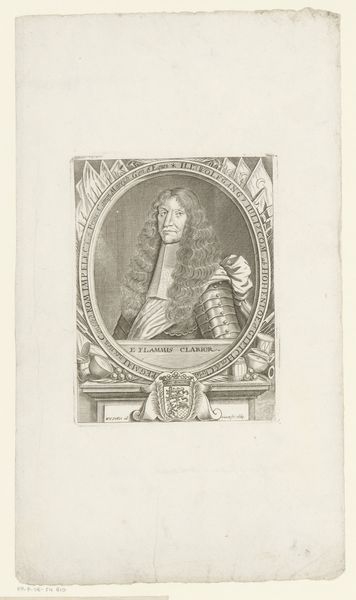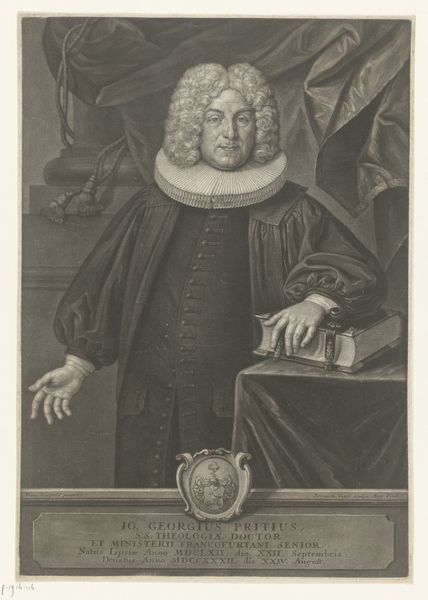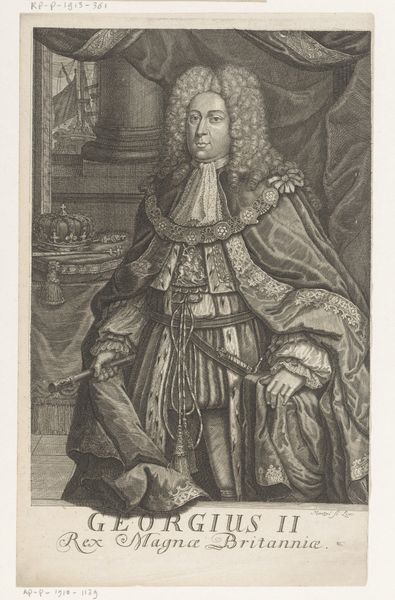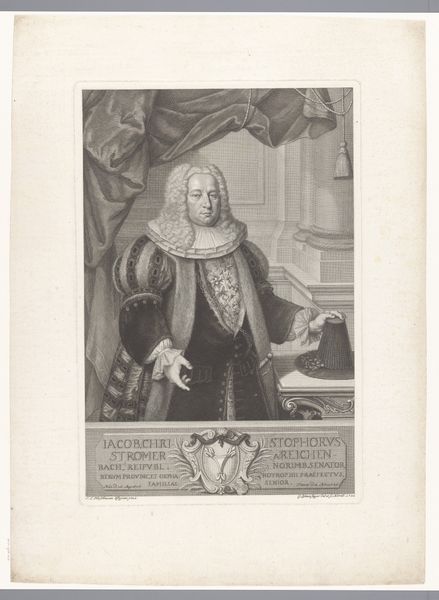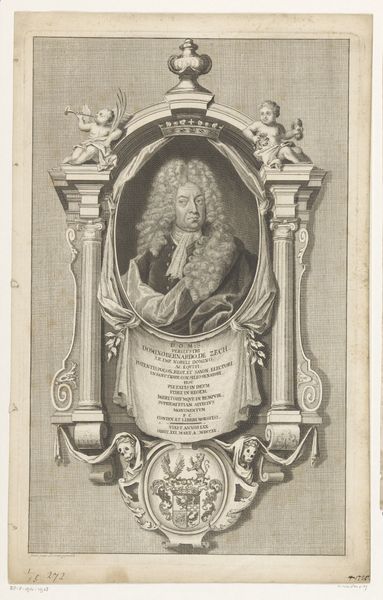
engraving
#
portrait
#
baroque
#
history-painting
#
engraving
Dimensions: height 283 mm, width 175 mm
Copyright: Rijks Museum: Open Domain
Christian Romstet created this portrait of Christoph Philipp Richter using engraving, a printmaking technique, sometime in the late 17th or early 18th century. The image is made by incising lines into a metal plate, applying ink, and then pressing paper against the plate to transfer the image. Engraving allowed for the relatively easy reproduction and dissemination of images. This was important for portraiture, enabling a wider audience to access likenesses of prominent figures. The precision and detail achieved through engraving are remarkable. You can see it in the intricate rendering of Richter's face, hair, and clothing, as well as the elaborate decorative elements surrounding him. This level of detail required considerable skill and time. The labor involved in creating such an image speaks to the value placed on portraiture and the desire to capture and preserve an individual's likeness for posterity. Considering the materials, making, and social context of this portrait enriches our understanding of its meaning and significance, challenging traditional distinctions between fine art and craft.
Comments
No comments
Be the first to comment and join the conversation on the ultimate creative platform.
